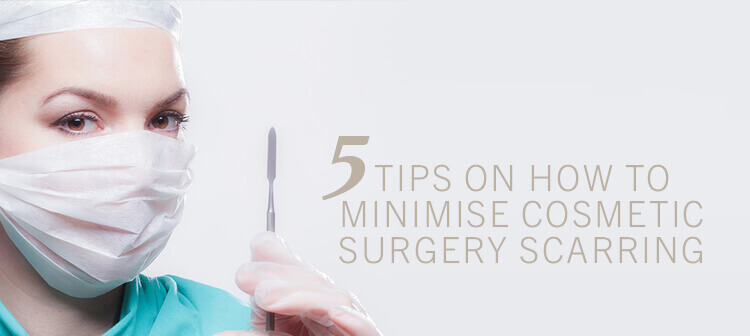Recently, the papers have been dominated with news of Katie Price’s latest cosmetic surgery adventure, accompanied by gruesome photographs revealing her facelift and breast augmentation scars. With stories of how the scars have become infected, that she had to fly back to Turkey to see her surgeon or even that she was worried her ears may fall off, it’s no wonder that anyone contemplating cosmetic surgery, might be thinking twice.
However, Katie’s experience shouldn’t be considered the norm; in fact, based on media coverage, it seems that Katie is doing everything wrong when it comes to cosmetic surgery scarring and the healing process.
Tips to minimise cosmetic surgery scarring
- Avoid sun exposure: Katie was snapped immediately after her surgery, swimming in the full Turkish sun with both her breasts and face scars on show. Avoiding sun exposure is one of our key recommendations during the healing process, particularly when it comes to facial rejuvenation surgery. Swelling, which is a common post-surgery complication, can become exacerbated by the sun’s UV rays. UV rays can also damage healing tissue and cause skin discolouration, all of which can make scarring appear worse, even when fully healed.
- Do not undergo a repeat procedure too soon: allegedly, this is the second facelift procedure that Katie has undergone in a matter of months. As our medical director Mr Alex Karidis explains: “I would never recommend any patient undergoes a repeat surgical procedure in the same area within just a few months as you’re still healing, and you are going to cause further trauma. I would advise patients to wait at least a year minimum before undergoing repeat surgery.”
- Choose a UK cosmetic surgeon: Katie flew abroad for her cosmetic surgery and has now had to return due to issues with how her scars are healing. There are many reasons why choosing an experienced, creditable UK-based plastic surgeon is important, but flying so soon after serious surgery is not advisable and having your surgeon on hand during the recovery process is essential.
- Embrace a healthy diet: studies have shown that there are certain nutrients the body requires for effective healing, such as zinc, protein, iron and vitamin C, so make sure you are eating well for optimal recovery.
- Quit smoking: nicotine is a major risk factor in wound healing complications. It is a vasoconstrictor, so it causes the blood vessels to narrow, reducing the amount of oxygenated and nutrient-rich blood to reach the healing tissues. Smoking also causes cell regeneration to slow down and this all contributes to poor quality scarring.
Mr Karidis, one of London’s leading plastic surgeons who has won awards for his scarring approach, also pointed out that placement of the incisions is a factor. “From the photographs, we can see that Katie’s scars are positioned in front of the ear and the scarring extends along the front of the hairline.
“This is an accepted incision placement, but I am totally against this technique myself as the problem is that, even with the best stitching and optimal healing, those scars will remain lighter than the surrounding skin and noticeable in front of the hairline.
“I am not a big fan of this scar placement and I make incisions within the hairline so you can’t see them afterwards. You will always be left with scarring after a facelift, but the surgeon’s job is to place them in the least visible place possible.”
For more advice on how best to minimise cosmetic surgery scarring, call 0203 553 6319 to arrange a consultation.
















